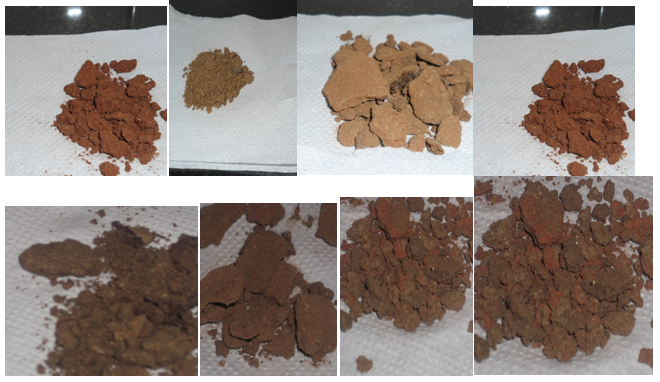Author: S.Sreeremya, Department of Biotechnology, Mercy College, Palakkad.
Email ID: sreeremyasasi@gmail.com
INTRODUCTION
Termites, usually known as white ants have major significance for our environment. Termited have the ability to produce methane, additionally there are enormous number of fungal microflora present in termite soil. Termite soil is otherwise known as Fungal Comb or Fungal Garden. Depending on geographic variations termite soil is classified into two types, Higher termite soil and Lower termite soil.
Plant cell walls are the most abundant renewable sources of fermentable sugars on the earth (Himmelet al., 1999; Saleemet al., 2008) and are the major reservoir of fixed carbon in nature (Yang et al., 2007). The major components of plant cell walls are cellulose, hemicellulose and lignin, with cellulose being the most abundant component (Han et al., 2003). Cellulose consists mainly of long polymer of ? 1, 4 â€" linked glucose units and forms a crystalline structure (Shalom and Shoham, 2003).
TERMITE
Termites are abundant in terrestrial ecosystems and ecologically very important too. Termites comprise complex assemblages of species. The significance of choosing termite soil is their ability to decompose lignocellulose; their ability largely depends on the microbial community present in the gut (Moriya Ohkuma., 2008). The association of certain species of termites with fungi is a very complex phenomenon. Termites have their symbiotic association with fungi that grow in their nests (Ahmed N., Abo â€" Khatwa, 1989).
FUNGAL MICROFLORA
Fungal mmicroflora was identified in various regions. Major Fungal Microflota or the Major Fungal Species identified are Aspegillus niger, Aspergillus oryzae, Aspergillus flavus, Neurospra sp, Mucour sp, Trichoderma sp, Penicillium sp.
RESULT OF SAMPLE COLLECTED FROM PALAKKAD DISTRICT AND FUNGAL MICROFLORA IDENTIFIED

CULTURAL CHARACTERISTICS
| SAMPLE NO: | COLOUR | TEXTURE | MARGIN | APPEARANCE |
| F -1 | Black | Raised | Regular | Velvetty |
| F â€" 2 | Bluish green | Raised | Regular | Velvetty |
| F- 3 | White | Puffy | Spreaded | Fuzzy |
| Fâ€" 4 | Brown | Raised | Regular | Powdery |
| Fâ€" 5 | Pink | Raised | Irregular | Velvetty |
| Fâ€" 6 | Green | Sticky | Regular | Wooly |
| F- 7 | White | Cottony | Irregular | Hairy |
| F- 8 | Whitish gray | Raised | Irregular | Velvetty |
Isolate1 - Fungi with black colour colonies bearing conidiosporeswas identified as Aspergillussp.,
Isolate2 - Fungi with bluish green colour colonies, bearing conidiospores (forming sterigma) was identified as Penicilliumsp.,
Isolate3 - Fungi with puffy whitecolour colonies,bearing irregular botryoidwere was identified as Phomasp.,
Isolate 4 - Fungi with brown colour colonies,bearingconidiospore(having truncate with undifferentiated bases) was identified as Cladisporiumsp.,
Isolate 5 - The fungi produced pink colour colonies with colonies bearing macroconidia. Thus the fungi was identified as Neurosporasp.,
Isolate 6 - The fungi has green colour colonies with conidiospores arranged as continuous ring.The fungi was identified as Trichodermasp.,
Isolate 7 - The fungi has white colour colonies with conidiospores with pyramidal arrangement. The fungi was identified as Trichodermasp .,
Isolate 8 - The fungi has whitish gray colour bearing conidiospores with cylindrical shapeThus the fungi was identified as Acremoniumsp.,
REFERENCES
1. Abo-Khatwa N.,(1979).Natural products from the tropical termite Macrotermessubhyalinus:Chemical composition and function of fungus garden.Proc. Pont. Acad. Sci. Vatican, Rome.,447-479.
2. Abou-Taleb, K.A.A., W.A. Mashhoor, S.A. Nasr, M.S. Sharaf and H.H.M. Abdel-Azeem, (2009). Nutritional and environmental factors affecting cellulase production by two strains of Cellulolytic Bacilli. Aust. J. Basic Applied Sci., 3: 2429-2436.
3. Alexander M., ( 1961). Microbiology of cellulose. In: Introduction to soilmicrobiology (2nd Ed). Johnwiley and Son, Inc. New york and London.
About Author / Additional Info: